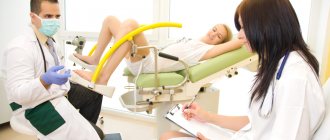In this article we will figure out whether it is possible to do fluorography during menstruation. Russia is a country with a rather unfavorable situation regarding a disease such as tuberculosis, so every adult is recommended to undergo a special examination once a year, which can detect this disease in the initial stages. This is the best method of prevention, which has proven its effectiveness over the years. However, women who have been referred for such a study often have the following question: “Is it possible to do fluorography during menstruation?”
What it is?
Why is fluorography needed? This is a type of x-ray examination, the meaning of which is to photograph organs and tissues of the human body using x-rays from a special screen, followed by digitization or recording on film and displaying the resulting image on a monitor. As a rule, the study is used to diagnose certain lung pathologies, although it was previously practiced in other medical fields, for example, in gastroenterology.
How many times a year can fluorography be done? Ideally, no more often, but at least once every 12 months. Depending on the equipment present in the medical institution, people can undergo digital or film fluorography. The film method is the most common. With it, X-ray radiation passes through the desired part of the patient’s body (chest) and hits the film. The technique provides for a rather high radiation dose, compared with the digital method, of 0.2–0.5 mSV, and the quality of the film image is below average.
The digital type of research is more modern and works similarly to a camera. An X-ray beam passes through the human body and hits a special matrix, after which it is digitized and the image is displayed on a monitor. The main advantage of this method is the low radiation exposure, which allows this study to be carried out by women during menstruation and even children.
Why is fluorography needed? Fluorographic examination helps to identify the presence of a variety of pathological processes in the lungs, including tuberculosis, pneumonia and malignant neoplasms. And if pneumonia is accompanied by a cough and fever, cancer and tuberculosis often do not make themselves felt for a long period, without causing pathological symptoms. This is where fluorography comes to the aid of specialists.
When is fluorography banned and why?
Women have the right to refuse fluorography in the following conditions:
- there is heavy menstrual flow (the patient can refuse a routine examination on any day of the cycle);
- menstruation accompanied by severe pain, attacks of nausea or dizziness;
- difficult postpartum period;
- breastfeeding a baby;
- pregnancy planning period - if conception is predicted in the next cycle;
- general malaise.
Specialist doctors say that menstruation distorts the results of some medical studies. This usually occurs due to the accumulation of gases in the digestive system. On the other hand, the radiation that affects the body can shift the cycle or even cause heavy bleeding.
Is it possible to perform fluorography during menstruation?
Girls under 15 years old do not undergo fluorography. In adolescents, the reproductive and endocrine systems and hormonal levels are unstable. Menstruation at this age is often irregular, accompanied by pain and poor health. Irradiation can cause malfunctions in some organs and systems and disrupt the already irregular menstrual cycle. Some patients (in rare cases) may develop mental disorders.
It is better for adult women during menstruation (from the 1st to the 8th days of the cycle) to avoid studies using ionizing radiation. At this time, the egg may be irradiated, which will subsequently be fertilized.
The menstrual cycle is individual for a woman. With inflammation or gynecological diseases, menstruation may be accompanied by heavy discharge and general weakness. Such manifestations can be intensified by external stimuli, which include ionizing radiation.
We cannot exclude the possibility that even a small radiation dose will provoke blood clotting disorders, which will increase the likelihood of developing intense bleeding.
What is the harm?
The harm of fluorography is greatly exaggerated. Indeed, during the procedure the patient is exposed to x-rays. But the fluorograph only works for a few seconds. During this time, a person receives a radiation dose of 0.1-0.3 mSv on outdated film-type devices or only 0.02-0.03 mSv on modern digital equipment. The amount of radiation depends on body weight and the location of the organ being examined.
How to prepare for fluorography?
To perform fluorography, no additional preparation is required: just come to the fluorography office, where the doctor will ask you to remove clothes and jewelry above the waist (women with long hair are advised to remove it from their shoulders). After this, the person approaches the device and takes a special position: his chin is on the stand, his hands should be resting on his hips, his chest should be pressed against the screen, his elbows should be spread wide to the sides.
Not everyone knows how to undergo fluorography. The specialist leaves the room and gives a signal when the patient needs to hold his breath. Before this, as a rule, short instructions are given, so the person knows exactly what is happening to him and how to behave. Next, the patient holds his breath for several seconds, during which the image is taken. The entire medical procedure takes no more than five minutes. When it is finished, you can leave the office, and at the appointed time all you have to do is come back for the results.
Is fluorography harmful to health? This is a common question.
What should pregnant women be afraid of?
All women know that nothing should interfere with pregnancy. This applies equally to medications, bad habits and medical procedures. Fluorography is also included in the list of factors that can negatively affect pregnancy.
Radiation has a particularly strong effect on rapidly dividing cells, interfering with this process. And the embryo at the initial stage is precisely their accumulation. Therefore, it is difficult to predict how the procedure will affect the formation of the fetus and the health of the child as he grows up.
Everything happens a little differently when fluorography is done before. At this stage, the fetus is too small to talk about anomalies in its formation. It is still on its way to the uterine cavity, so its exposure to ionizing radiation is minimal and not so scary. If it does happen and significantly affects the cells of the embryo, nature will most likely take care of everything itself, and the pregnancy will be terminated at a very early stage.
If fluorography is performed during menstruation, a woman should be clearly aware of the possible consequences. Sometimes they are completely excluded. In some cases, it is worth delaying the examination. But if there is no urgency in it, then it is better to do fluorography after the critical days, when the possibility of pregnancy is excluded, the hormonal levels are stable, and it is far from ovulation.
In order to promptly recognize many diseases, the initial phase of which usually occurs in a latent form, one cannot do without regular fluorographic examination. This category includes all serious diseases - pulmonary, cardiovascular, endocrine, even cancer, which develop completely unnoticed, and if they are not detected and stopped in time, the matter can end very unpleasantly.
However, you should know how often you can visit the X-ray room for preventive purposes. This, in particular, depends on the nature of the suspected disease itself. For example, fluorography is very important for tuberculosis, and in order to prevent it, X-rays should be taken in a timely manner; this is a very accessible and practically safe study.
In addition, there are standards according to which a preventive medical examination to determine tuberculosis should be carried out at least once every two years.
It should be added that there are categories of people who must undergo this study more often due to epidemic requirements, for example, workers of maternity hospitals visit the X-ray room twice a year, people who are in close contact with a patient with tuberculosis. In addition, patients with chronic diseases, for example, bronchial asthma, diabetes mellitus, peptic ulcer disease, HIV-infected people, citizens released from correctional facilities during the first two years must also undergo fluorography twice a year.
Patients who apply with suspected tuberculosis, those living with newborns or pregnant women, as well as conscripts are examined out of turn.
During the study, a person undoubtedly comes under the influence of ionizing radiation, however, it affects only hundredths of a second. A similar dose of radiation can be obtained by sunbathing in about a week, even less.
Recently, modern digital technologies have been widely introduced, and the detector of a digital instrument has become much more sensitive, and this has made it possible to reduce the radiation dose by more than ten times, even with improved images.
Naturally, there are contraindications to this study, for example, only for special indications is fluorography allowed for children under fifteen years of age. Fluorography is strictly prohibited for pregnant women.
However, for serious indications, fluorography is allowed for women after thirty-six weeks of pregnancy, using special precautions. But in the first weeks, when the child’s organs are just developing, such studies are completely prohibited.
Radiation has the greatest effect on cells that have the ability to divide. It is during fission that they are defenseless against harm caused by external factors, including radiation. In the embryo, the cells of all organs constantly and actively divide, which distinguishes them from the cells of an adult. If a woman receives radiation in the first period of pregnancy, pregnancy is excluded. Therefore, experts recommend that women undergo fluorography during menstruation in order to have
If a woman is pregnant and, without knowing it, undergoes a fluorographic examination, we can only hope that the source of radiation influence was at a considerable distance from the uterus. In any case, immediately after confirmation of pregnancy, you should undergo a special test to identify pathologies and abnormalities of the fetus.
If there is an urgent need for a pregnant woman to undergo fluorography, it is carried out at the end of the second trimester; this period is not so dangerous for the child.
Nursing mothers can undergo fluorography on a general basis; it will not harm the baby.
If you have not undergone other radiation-related studies in a year, fluorography itself is completely incapable of harming your body.
Many representatives of the fair sex are interested in the question of whether it is possible to do fluorography during menstruation, because this time is very difficult for both a woman and her body.
Each disease has its own diagnostic methods, of which fluorography plays a major role. This procedure allows you to see various abnormalities in the lungs and chest cavity. Therefore, this diagnostic method is one of the most important and recommended not only in the presence of suspicious symptoms, but also for conducting a preventive examination. Fluorography makes it possible to recognize such dangerous ailments as pneumonia, tuberculosis, and even determine oncology if a cancerous tumor affects the chest area. Experts strongly recommend not to refuse to regularly undergo such a procedure. In this case, a person will have the opportunity to find out about the presence of the disease at an early stage of its development and receive the necessary treatment quickly enough to completely cure the disease without surgery.
The fluorography method involves the use of X-rays. The radiation dose is small, so it does not cause any harm to the adult body. However, there are some limitations when using X-rays. They relate to the patient’s age, so fluorography is not prescribed for children, as well as for the fair sex during pregnancy.
In normal conditions, a woman may be prescribed fluorography if she underwent a similar procedure more than six months ago. But many representatives of the fair sex are concerned about the question: is it possible to undergo a lung examination during menstruation. They are concerned about the risk factor and the reliability of the results.
Fluorography during menstruation
Menstruation itself does not in any way prevent women from undergoing fluorographic examinations: the proportion of radiation that the patient will receive in the process is too insignificant. However, experts recommend undergoing fluorography in the first half of the menstrual cycle, when bleeding has already stopped, but the period of ovulation has not yet occurred. This is due to two reasons:
- Possible pregnancy. If you undergo a fluorographic examination in the second half of the monthly cycle, when ovulation has already passed, there is no guarantee that an embryo is not developing in the woman’s uterus. And in the first trimester, even the lowest doses of radiation treatment can negatively affect the development of the fetus and lead to the development of serious anomalies or diseases. If a patient undergoes menstruation during fluorography, this is not a guarantee of absence of pregnancy, since there are many cases where the first menstruation during pregnancy occurs as usual.
- General weakness. Even if the patient easily tolerates menstruation, there is a chance that fluorography will negatively affect her and provoke unpleasant symptoms that, as a rule, are not observed: increased menstrual bleeding, headache, irritability, abdominal pain, weakness, dizziness, fainting. This is due to the effect that radiation has on the composition of human blood.
So, is it possible to do fluorography during menstruation? If a woman uses contraceptives, does not intend to become pregnant and does not have problems with the hormonal, reproductive and circulatory systems of the body, she may well undergo the procedure during menstruation.
Is it possible to do fluorography on menstrual days?
Before answering the question about the advisability of carrying out the procedure during menstruation, it is necessary to remember that the course of critical days completely depends on the influence of extraneous factors. Such processes include:
- hormone production;
- endometrial renewal;
- replacement of lost blood fluid;
- removal of follicles.
Contraindications
We told you how many times a year you can do fluorography. Are there any contraindications for this procedure?
If we talk about healthy women, then there is no need to worry about menstruation during fluorography. However, not all patients are healthy, so not everyone is prescribed such a study during menstruation. There are a number of cases in which menstruation is a contraindication to fluorography.
Is the procedure always free?
The result of a lung x-ray has a limited shelf life of 1 year.
Sometimes they are sent for examination forcibly when visiting one or another specialist.
Before making a diagnosis or prescribing treatment, any doctor must make sure that the result of a lung x-ray is available. Once a year,
the procedure is carried out completely
free of charge
, under an insurance policy.
If there is a need for additional
examinations, x-rays have to be done for money
in a paid clinic
. They also go to a private hospital if they need to diagnose the lungs in the absence of indications.
Pregnant women and children
Another important contraindication to fluorography is pregnancy and children under 15 years of age. Relative limitations include severe shortness of breath and the patient’s inability to remain in an upright position, as well as claustrophobia. At what age is fluorography prescribed? For a teenage girl less than fifteen years old, fluorography during menstruation is a bad decision, and this is due to several reasons:
- Hormonal instability. The body at this age is still developing. The girl's menstruation occurs without any system; there is a significant hormonal imbalance. Additional stress in the form of fluorography can interfere with the formation of the reproductive system and significantly disrupt the hormonal balance.
- Stressful condition. Even a minor medical procedure can cause stress in a teenager: the general atmosphere of the medical institution, as well as the need to wait for her turn, can negatively affect the girl and provoke violations.
If, for certain reasons, a teenager is still prescribed this study, more gentle methods that do not affect the body are used, as a rule.
Adolescence
Girls who have not yet turned fifteen should refrain from fluorography during their menstrual periods. This is due to the following reasons:
- Stress. A teenage girl’s body has not yet fully formed, and even a trivial procedure can cause stress. Being in line for a long time, a girl may experience unnecessary worries. And the general atmosphere in a medical institution often has a depressing effect.
- Instability. In adolescence, menstruation occurs unsystematically, and hormonal disruptions often occur. Girls at this time experience emotional outbursts and unmotivated aggression.
Additional stress can further disrupt the hormonal balance. When an examination is urgently needed, more gentle methods are used that do not affect the body.
Fluorography when planning pregnancy
The egg, suitable for fertilization in the future menstrual cycle, moves from the ovaries to the uterine cavity during the end of menstruation. If fluorography is done at this time, there is a possibility that this procedure will affect the structure of the egg, make it infertile, or cause abnormalities in the further development of the fetus. Ideally, if a patient is planning to conceive in the near future, she should refrain from undergoing such a medical examination for at least six months before the expected pregnancy.
Features of the procedure in women
The position in which a person is during fluorography does not depend on gender differences
. Most often, the procedure is performed in a standing position. The machine is designed in such a way that X-rays pass through the chest and are reflected on a film or digital plate located behind the patient's back.
Photo 1. During fluorography, the hands should be separated, breathing should be held for a while.
raised up during the movement of X-rays
or
spread apart
.
To obtain the best image quality, hold your breath.
The shoulders are directed forward at this moment.
The only difference between women's fluorography and men's is the possibility of using a protective apron
. It is placed on the lower abdomen.
Carefully!
During lactation, fluorography is performed
only for serious indications.
Is it possible to do fluorography for girls during menstruation?
Women are recommended to undergo fluorography in the first half of the menstrual cycle
, after the end of menstruation. If you take an x-ray during your period, nothing bad will happen, but it is advisable to eliminate unnecessary stress on the body during this period.
In the second half of the cycle, fluorography is prohibited
, because a woman who is sexually active may not yet know about her pregnancy. The embryo has not yet attached to the uterus, but X-rays can have a negative impact on its development.
Fluorography after childbirth
For women in the postpartum period, this procedure during menstruation is absolutely contraindicated for several reasons:
- Restoration of hormonal levels. The fact that a woman has her period after giving birth is an obvious sign: the recovery processes are going correctly and the hormonal system is returning to normal. At this time, any intervention, including irradiation, can upset this balance.
- Stress. During pregnancy and childbirth, the female body experienced great stress, which affected all systems. Therefore, it will take some time to restore it, as a result of which it is better to refrain from medical examinations for six months that could affect this important process.
The influence of menstruation on fluorography
You need to spend no more than 10 minutes to undergo a fluorographic examination, and the radiation dose a woman receives is 50 times lower than what she receives from some sources in natural conditions. Since a negative impact on the body during this type of diagnosis is excluded, it is quite acceptable to undergo it on critical days.
As for the quality of fluorography during menstruation, the presence of regula cannot cause an incorrect examination and does not in any way affect its result. But there is a high probability that X-ray exposure may affect the development of the endometrium and the functioning of the glands, including the corpus luteum. You also need to remember that during menstruation the protective functions of the female body are significantly reduced, so it is better not to subject it to additional stress in the form of x-ray radiation, especially when the woman does not feel well during this period.
Since during menstruation a woman’s hematopoietic system works in an enhanced mode, and her immunity is somewhat reduced, some experts argue that at this time there is a high risk that x-rays can provoke the development of oncological processes.
During menstruation, hormonal changes also affect the condition of the mammary glands; such changes may somewhat distort fluorography data, but these deviations will be so insignificant that specialists do not pay attention to them.
In general, menstruation cannot in any way affect the result of fluoroscopy, but at this time it should only be done if there are serious reasons, for example, if there is a suspicion that a woman has pulmonary tuberculosis or has been in contact with such patients.
During lactation
In addition, if a woman is lactation, this is also a reason to refuse fluorography. Such research may influence the composition of mother's milk.
Any disturbances in the menstrual cycle and functioning of the reproductive system are a reason to play it safe. Unless, of course, there is an urgent need to make such a diagnosis.
We continue to consider the pros and cons of fluorography during menstruation.
Is the procedure harmful during pregnancy?
During pregnancy, experts recommend avoiding fluorography, especially in the early stages. At this time, the processes of formation and laying of the main systems of the embryo occur. It is particularly sensitive to the effects of X-rays. If during this period a woman is exposed to unfavorable factors, they can lead to miscarriage or improper formation of the organs of the unborn child, or the occurrence of genetic abnormalities (for example, chromosomal mosaicism). As a result, the baby is born sick. To preserve the health of the fetus, it is necessary to exclude X-rays until the 36th week of pregnancy.
Indications for research during menstruation
Fluorography is prescribed, despite menstruation, in the following situations:
- If the patient is suspected of developing pulmonary tuberculosis, any other serious pulmonary pathology or neoplasm. In such cases, the sooner the fluorography result is obtained, the sooner therapeutic measures will begin.
- The woman had contact with a person who has tuberculosis. If he has an accurate diagnosis, the suspicion of infection is natural. Along with special laboratory tests, fluorography is performed.
- The patient is constantly in contact with people infected with tuberculosis - for example, when a loved one she is caring for is sick. In this case, the best method of prevention is constant monitoring of the condition of the lungs.
- In the area where the patient lives, there is an outbreak of tuberculosis - then the phthisiatrician or therapist insists on mandatory examination of the entire population and the woman’s menstruation is not a reason to cancel such examination.
We looked at whether it is possible to do fluorography during menstruation.
Who and how often?
Everyone over 18 years of age must undergo fluorographic examination periodically. However, there are certain groups of people who need to have fluorography done once a year due to their professional activities or certain life circumstances. These include:
- specialists whose professional activities are associated with the possibility of contracting tuberculosis (medical workers), as well as people working in organized teams: preschool institutions, schools, or employed in the food industry, trade.
- medical risk group (people who have certain chronic diseases). In particular, these are patients suffering from diabetes mellitus, various lung diseases, immunodeficiency conditions, including HIV, and serious diseases of the gastrointestinal tract (for example, hepatitis, colitis). Due to poor health, such people have a fairly high risk of “catching” tuberculosis.
- so-called social risk group : people leading an antisocial lifestyle, abusing alcohol, narcotic or psychotropic substances, without a fixed place of residence, as well as those who were previously in prison.
The rest need fluorography every two years. However, if contact has been recorded with a person who is sick with tuberculosis, it is necessary to take a chest x-ray every six months for two years and be under the supervision of a phthisiatrician.
Description of the procedure
Fluorography diagnoses the condition of the chest organs (lungs, heart). The principle of the examination is similar to an x-ray, only x-rays are prescribed for suspected tuberculosis, where the dose of ionizing radiation increases. These methods differ only in the radiation dose.
The result of a fluorographic examination of the chest is recorded on a CCD matrix (“charge-coupled device”). The organs in the picture look different. This is explained by the fact that radiation is absorbed differently by tissues.









